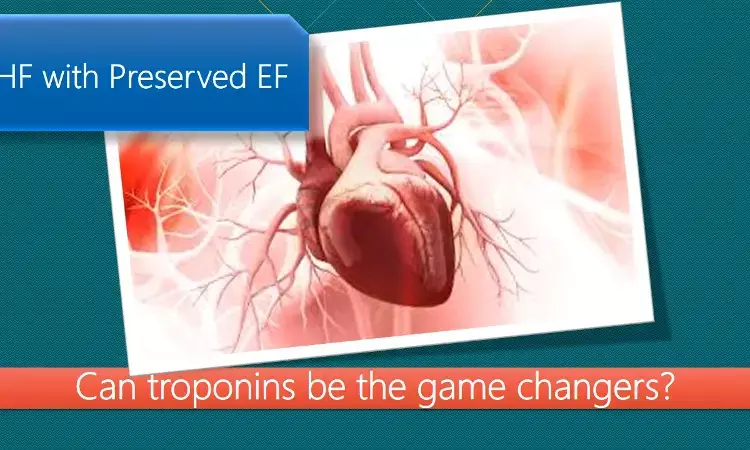- Home
- Medical news & Guidelines
- Anesthesiology
- Cardiology and CTVS
- Critical Care
- Dentistry
- Dermatology
- Diabetes and Endocrinology
- ENT
- Gastroenterology
- Medicine
- Nephrology
- Neurology
- Obstretics-Gynaecology
- Oncology
- Ophthalmology
- Orthopaedics
- Pediatrics-Neonatology
- Psychiatry
- Pulmonology
- Radiology
- Surgery
- Urology
- Laboratory Medicine
- Diet
- Nursing
- Paramedical
- Physiotherapy
- Health news
- Fact Check
- Bone Health Fact Check
- Brain Health Fact Check
- Cancer Related Fact Check
- Child Care Fact Check
- Dental and oral health fact check
- Diabetes and metabolic health fact check
- Diet and Nutrition Fact Check
- Eye and ENT Care Fact Check
- Fitness fact check
- Gut health fact check
- Heart health fact check
- Kidney health fact check
- Medical education fact check
- Men's health fact check
- Respiratory fact check
- Skin and hair care fact check
- Vaccine and Immunization fact check
- Women's health fact check
- AYUSH
- State News
- Andaman and Nicobar Islands
- Andhra Pradesh
- Arunachal Pradesh
- Assam
- Bihar
- Chandigarh
- Chattisgarh
- Dadra and Nagar Haveli
- Daman and Diu
- Delhi
- Goa
- Gujarat
- Haryana
- Himachal Pradesh
- Jammu & Kashmir
- Jharkhand
- Karnataka
- Kerala
- Ladakh
- Lakshadweep
- Madhya Pradesh
- Maharashtra
- Manipur
- Meghalaya
- Mizoram
- Nagaland
- Odisha
- Puducherry
- Punjab
- Rajasthan
- Sikkim
- Tamil Nadu
- Telangana
- Tripura
- Uttar Pradesh
- Uttrakhand
- West Bengal
- Medical Education
- Industry
Troponins may be useful guide for ARNI therapy in HFpEF, finds JACC study

Heart failure (HF) with preserved ejection fraction (HFpEF) accounts for one-half of HF cases, and research has been ongoing for many years to find effective treatment strategies for the same. The prognostic value of high sensitivity troponin-T (hs-TnT) in HFpEF, and whether hs-Tn modifies the treatment response to sacubitril/valsartan, remains uncertain.
In this regard, Gori et al assessed the relationship among hs-TnT, outcomes, and the efficacy of treatment with sacubitril/valsartan in the PARAGON-HF trial and found that higher hs-TnT was associated with increased risk outcomes in HFpEF which were reduced with the use of sacubitril/valsartan compared with valsartan.
In the PARAGON-HF trial, sacubitril/ valsartan resulted in modest reductions in total HF hospitalizations (HHF) and cardiovascular death (CVD) compared with valsartan alone. Since the early studies of high-sensitivity troponins in chronic heart failure with reduced ejection fraction (HFrEF), the predictive value of troponin became increasingly evident.
Gori et al thus aimed to explore the utility of this marker in HFpEF from the PARAGON-HF cohort and compared the risk of the composite outcome of CVD and total HHF according to hs-TnT. They also assessed the effect of allocated treatment on hs-TnT.
The study has provided following important findings:
1. Female sex is strongly associated with lower hsTnT. This trend is not evident for NT-proBNP.
2. Conversely, hsTnT is unaffected by high body mass index while NT-proBNP and BNP concentrations are significantly lower in obese.
3. Sacubitril/valsartan decreased NT-proBNP concentrations over 16 weeks by 19%, while the decrease in hsTnT was 9%.
4. Sacubitril/valsartan reduced circulating NT-proBNP levels to a lesser extent in patients with atrial fibrillation (AF), but the same unexpected trend was not reported for hsTnT.
5. Also, antecedent AF raised NT-proBNP while no such interaction occurred with hsTnT.
6. Consistent with the overall lack of superiority of sacubitril/valsartan versus valsartan in PARAGON-HF, NT-proBNP baseline concentrations did not affect the impact of the study drug.
7. However, sacubitril/valsartan tended to have a greater effect in patients with higher baseline hsTnT than in those with lower baseline hsTnT.
"Altogether, we can conclude that the 2 cardiac biomarkers tell somewhat different stories in HFpEF", mention Latini et al in an accompanying editorial. In other words, a complementary relationship between natriuretic peptides and hsTnT has been confirmed so that the combination of the 2 biomarkers is proposed for identification of patients with HFpEF at high risk.
To conclude, higher baseline hs-TnT was associated with increased risk of CVD/HHF, whereas hs-TnT decrease at 16 weeks led to lower subsequent risk of CVD/HHF compared with those who had persistently elevated values. Sacubitril/ valsartan significantly reduced hs-TnT compared with valsartan. hs-TnT may be helpful in identifying patients with HFpEF who are more likely to benefit from sacubitril/valsartan.
Source: JACC Heart Failure: https://doi.org/10.1016/j.jchf.2021.04.009
MBBS, MD , DM Cardiology
Dr Abhimanyu Uppal completed his M. B. B. S and M. D. in internal medicine from the SMS Medical College in Jaipur. He got selected for D. M. Cardiology course in the prestigious G. B. Pant Institute, New Delhi in 2017. After completing his D. M. Degree he continues to work as Post DM senior resident in G. B. pant hospital. He is actively involved in various research activities of the department and has assisted and performed a multitude of cardiac procedures under the guidance of esteemed faculty of this Institute. He can be contacted at editorial@medicaldialogues.in.
Dr Kamal Kant Kohli-MBBS, DTCD- a chest specialist with more than 30 years of practice and a flair for writing clinical articles, Dr Kamal Kant Kohli joined Medical Dialogues as a Chief Editor of Medical News. Besides writing articles, as an editor, he proofreads and verifies all the medical content published on Medical Dialogues including those coming from journals, studies,medical conferences,guidelines etc. Email: drkohli@medicaldialogues.in. Contact no. 011-43720751


